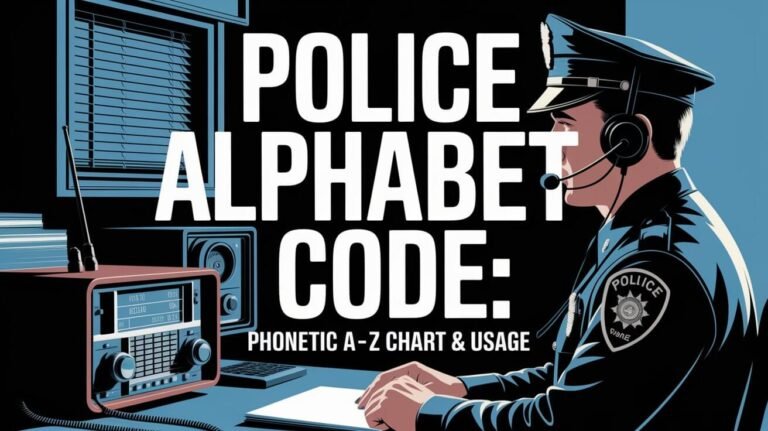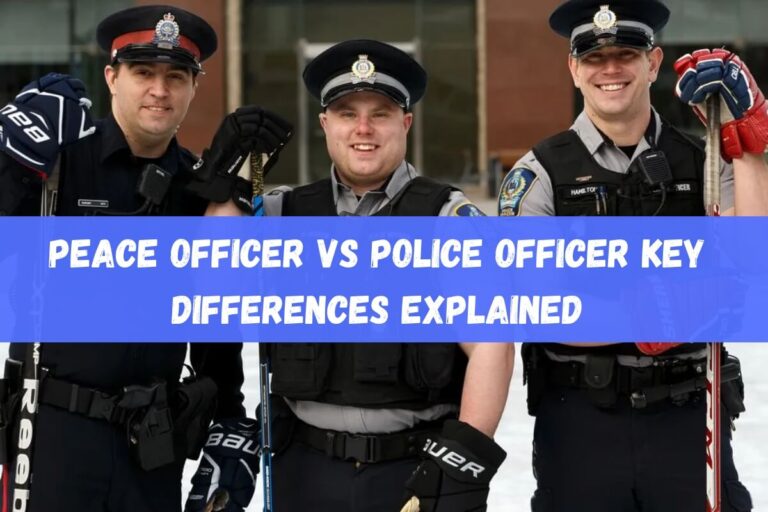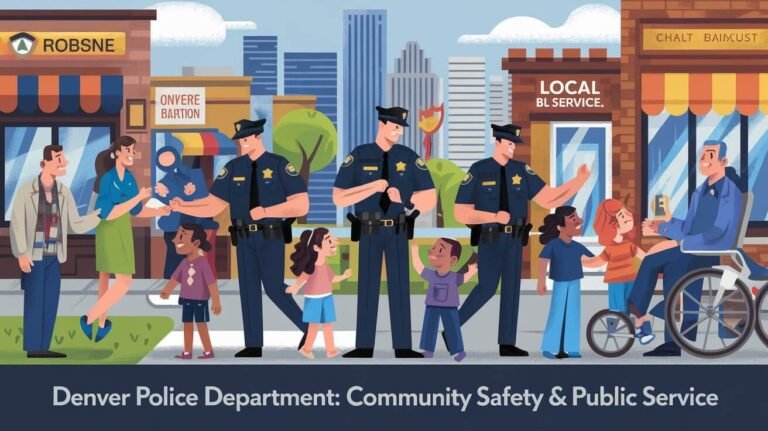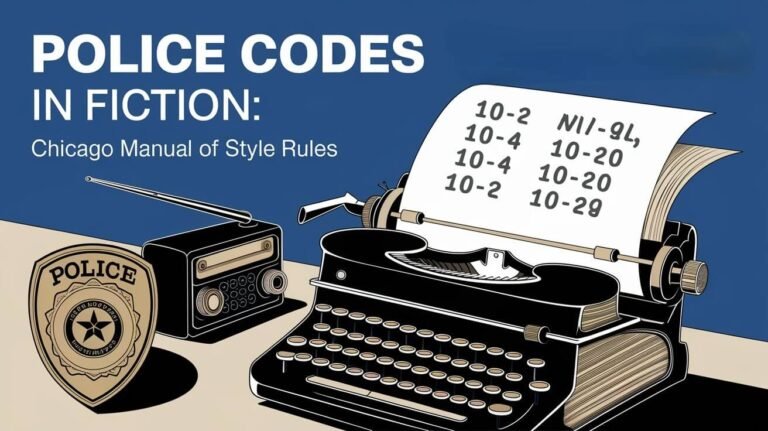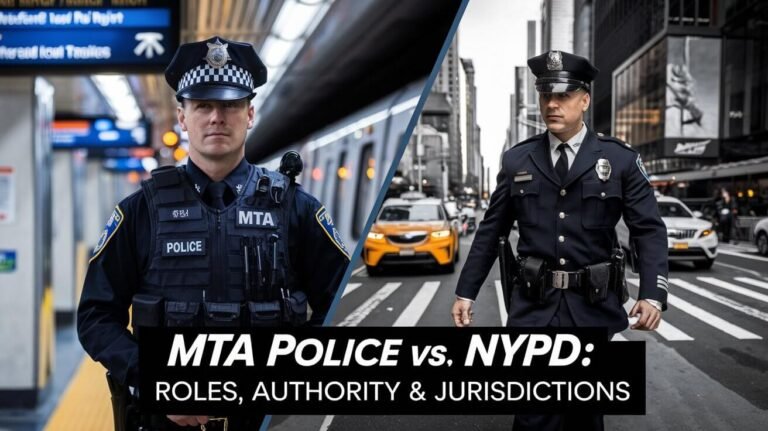A Man Walking Down The Street Appears To Have An Illegal Weapon. What Can A Police Officer Do?

When a police officer thinks someone might have an illegal weapon, they face a tough challenge. They must protect everyone while respecting the person’s rights. This article will look at the laws, how to investigate, and the best ways for police to handle these situations.
Legal Framework of Police Response to Suspicious Weapons
When a police officer meets someone suspected of carrying an illegal weapon, they face a complex legal challenge. The Fourth Amendment protects citizens from unreasonable searches and seizures. This limits what officers can do. People also have rights that must be respected during these meetings.
Fourth Amendment Protections
The Fourth Amendment keeps the government from intruding too much. It says searches and seizures must be fair. This rule applies to police dealings with people suspected of carrying weapons. Officers need a good reason for any search or stop.
The Supreme Court’s Terry v. Ohio decision set a “reasonable suspicion” standard. This lets officers do a quick stop and frisk if they think someone is armed and dangerous.
Constitutional Rights During Encounters
People have rights that limit what police can do, even if there’s a good reason to suspect a weapon. These rights include the right to say no to a search, the right to stay silent, and the right to not face too much force. Officers must remember these rights and balance them with keeping everyone safe.
State-Specific Regulations
States also have their own rules for dealing with suspected illegal weapons. For example, in Texas, an officer can arrest someone without a warrant if they have enough reason to believe a crime was committed. Police should talk to legal experts to make sure they follow all laws and rules.
Understanding the legal rules for police actions is key. Officers must respect Fourth Amendment rights, constitutional rights, and state-specific regulations on weapon laws. Finding the right balance between safety and freedom is very important in these situations.
Defining Reasonable Suspicion in Weapon-Related Cases
In the United States, “reasonable suspicion” is key in deciding when police can stop and frisk someone briefly without a warrant. The Supreme Court says it’s more than just a guess but less than what’s needed for an arrest. This is based on the case of Terry v. Ohio (1968).
The Terry v. Ohio case allowed for brief stops and frisks if there’s reasonable suspicion. It lets police detain and search people if they believe they might be armed and dangerous. This gives officers a way to act quickly in certain situations.
But, just not wanting to talk to police isn’t enough for reasonable suspicion, as Florida v. Bostick (1991) showed. On the other hand, running away in a high-crime area can be enough, as Illinois v. Wardlow (2000) found.
In Arizona v. Johnson (2009), the Supreme Court said officers can frisk passengers during a stop if they think they might be armed. This is true even if there’s no suspicion of a crime.
These cases and rules help police know when to use reasonable suspicion in weapon cases. They make sure safety and rights are balanced.
Probable Cause Standards for Police Action
“Probable cause” is key for police to legally search or arrest someone. It means a crime is likely happening or has happened. This high standard lets police get warrants or make arrests right away if they see a crime.
Elements of Probable Cause
To find probable cause, police must look closely at the situation. They need to show there’s a good chance evidence of a crime will be found. This was decided by the Supreme Court in Illinois v. Gates (1983).
Difference from Reasonable Suspicion
Probable cause is more than reasonable suspicion. Reasonable suspicion lets police stop and search briefly if they think someone might be armed. But probable cause means they’re sure a crime is happening, allowing for more actions like full searches or arrests.
Legal Precedents and Court Decisions
The Supreme Court made it clear in Maryland v. Pringle (2003) that probable cause can justify arresting more than one person. This ruling is based on the whole situation, not just one thing.
| Legal Precedent | Key Findings |
|---|---|
| Illinois v. Gates (1983) | Established that probable cause for a search warrant requires a “fair probability” that evidence will be found in a particular place. |
| Maryland v. Pringle (2003) | Allowed the arrest of multiple suspects in certain circumstances, based on the totality of the circumstances. |
Stop and Frisk Procedures for Armed Suspects
The stop and frisk rules were set in the Terry v. Ohio case in 1968. They let police briefly hold and search people if they have a good reason. This helps keep everyone safe and protects the rights of individuals.
Police need clear reasons to think someone might be armed and dangerous. Just a tip from someone who wants to stay anonymous isn’t enough, as seen in Florida v. J.L. (2000). They must look at everything, like how the person acts and where they are.
Under Terry stop rules, police can hold someone for a quick search. They check the outer clothes for weapons. This search is only to find weapons that could harm the officer or others. It doesn’t mean they can search everything the person has.
| Key Terry Stop Statistics | Data |
|---|---|
| Year Terry v. Ohio was decided | 1968 |
| Number of U.S. states that have adopted Terry stop procedures | 50 |
| Percentage of individuals stopped and frisked in New York who were innocent | 90% |
| Percentage of people stopped and frisked who are not technically under arrest, yet are not free to leave | 100% |
| Acceptable time limit for a Terry stop before it violates the Constitution | 0% (Rodriguez v. United States) |
The Terry stop is a key tool for police to stop crimes and keep themselves safe. It’s important for everyone to know how it works. This helps keep the balance between protecting people and respecting their rights.
What can a police officer do if a man seems to be carrying an illegal weapon?
When a police officer sees someone on the street with what looks like an illegal weapon, they must act fast. They need to check the situation and keep everyone safe. They should know the laws, follow their rules, and talk well to the person.
Initial Assessment Steps
The officer’s first step is to watch how the person acts and gather facts. They look for signs like bulges or odd movements. They stay back to avoid making things worse.
Safety Protocols
If the officer thinks the person might be armed, they call for help. They stay alert and keep a safe distance until more officers arrive. They try to keep things calm and safe for everyone.
Communication Guidelines
The officer should clearly say who they are and give simple instructions. They must stay calm and not do anything sudden. Their goal is to talk well, get the needed info, and calm things down.
Vehicle Stop Protocols When Weapons Are Suspected
When police suspect weapons during traffic stops, they must follow strict rules. The Supreme Court’s United States v. Arvizu (2002) ruling says officers need a “founded suspicion” to stop a vehicle. This means they must have solid reasons to believe a crime is happening.
The Maryland v. Wilson (1997) case lets officers search the car’s passenger area if they think someone might be dangerous. This is because they believe the person could get to a weapon. Also, Maryland v. Wilson (1997) allows officers to move passengers in and out of the car during a stop.
Arizona v. Johnson (2009) lets officers frisk passengers if they think they might be armed and dangerous. This shows how crucial it is for officers to explain their reasons for a frisk. It keeps everyone’s rights safe and ensures officers follow the law.
| Landmark Case | Key Ruling |
|---|---|
| United States v. Arvizu (2002) | Requires “founded suspicion” for vehicle stops |
| Michigan v. Long (1983) | Allows searches of vehicle areas where weapons may be hidden |
| Maryland v. Wilson (1997) | Permits ordering passengers in and out of the vehicle |
| Arizona v. Johnson (2009) | Allows frisking passengers if reasonably believed to be armed and dangerous |
Law enforcement officers use these legal rules to balance safety and rights during stops. This ensures a safe and fair interaction for everyone involved.
Rights and Limitations of Police Officers During Weapon Searches
Police officers have clear rights and limits when looking for weapons. They must follow the rules set by the Fourth Amendment and legal cases. Keeping detailed records is key to doing this right and keeping trust with the public.
Search Parameters
Police can only search as much as they have reason to believe is necessary. They can’t do a full search without a good reason. They must respect your rights and only look in places where the weapon might be.
Documentation Requirements
- Officers need to write down why they started the stop or search, including any clues they had.
- They must also document what they did during the search, like where they looked and what they found.
- Good records are important to show the search was legal and to prepare for court if needed.
Keeping everyone safe while respecting rights is a big job for police. By following the rules and keeping detailed records, officers can make sure their searches are fair. This helps them earn the trust of the communities they protect.
Police Response in High-Crime Areas
In high-crime neighborhoods, police often use “heightened suspicion.” The case Illinois v. Wardlow (2000) showed that running from police can mean a stop and frisk is okay. But, it’s important to remember that just being in a bad area isn’t enough for a stop.
Officers need solid reasons to stop someone. They can’t just use the area’s crime reputation. They must look at all the facts before acting.
| Statistic | Value |
|---|---|
| Killings per day in the U.S. | 46 |
| Killings per day in the European Union | 8 |
| Violent crime in the U.S. since the 1990s | Declined sharply |
| Gun offenders in Missouri | Often receive a suspended imposition of sentence |
The ATF helped a lot in this area. They worked on surveys and sent people to a Summit in Washington (Grant number: 1999-CK-WX-0076). Over 1,000 law enforcement leaders answered the survey, and over 250 agencies’ materials were checked. The exact number of experts involved isn’t known, but 6 main areas were found.
This shows how hard it is for police in high-crime areas. They have to keep everyone safe while also protecting people’s rights. It’s all about making sure police have real reasons for their actions, not just the area’s reputation.
Evidence Collection and Documentation Procedures
In cases involving weapons, collecting and documenting evidence is key. It helps keep the chain of custody intact and builds a solid legal case. Police must follow strict rules to make sure any seized weapons or evidence can be used in court.
The first step is to carefully observe and assess the situation. Officers need to write down all their observations, actions, and reasons for suspicion in detailed police reports. These reports are crucial for recording the incident and explaining any searches or seizures.
Keeping the chain of custody is very important. Any weapons or evidence found must be handled, packaged, and stored carefully to avoid contamination or tampering. Keeping detailed records, including who handled the evidence and when, helps keep the evidence’s integrity.
| Key Evidence Collection and Documentation Procedures |
|---|
| Thorough observation and assessment of the situation Detailed documentation in police reports, including observations, actions, and reasons for suspicion or probable cause Proper handling, packaging, and storage of seized weapons and evidence to maintain the chain of custody Comprehensive documentation of the chain of custody, including time, location, and officer responsible for each step |
Sticking to these strict procedures, police can make sure any evidence from a weapon-related incident is admissible in court. This is crucial for building a strong case. Proper evidence collection and documentation are vital for upholding the law and protecting everyone’s rights.
Legal Consequences of Unlawful Searches and Seizures
The exclusionary rule is key in protecting the Fourth Amendment. It stops evidence from being used in court if it was found illegally. If police don’t have the right reason to search, they might lose the evidence.
Court Precedents
Important Supreme Court cases, like Mapp v. Ohio (1961), have made the exclusionary rule a strong tool. The Court says it’s needed to stop police from breaking the law and protect people’s rights.
Defense Challenges
Defense lawyers often question the legality of police actions. They argue that the search or seizure was not justified. This can lead to the evidence being thrown out. The prosecution must prove the police were right.
| Key Statistics | Explanation |
|---|---|
| Terry v. Ohio (1968) | The Court approved an on-the-street investigation by a police officer that involved “patting down” the subject for weapons. |
| Absence of Probable Cause | Extensive intrusions on individual privacy, such as transportation to the station house for interrogation and fingerprinting, were invalidated in the absence of probable cause. |
| Anonymous Tips | The Court has ruled that an uncorroborated, anonymous tip is insufficient basis for a Terry stop, and that there is no “firearms” exception to the reasonable suspicion requirement. |
In Conclusion
Law enforcement officers face a tough challenge. They must balance public safety, constitutional rights, and their own discretion. They follow strict rules to search for illegal weapons. This ensures they protect everyone while respecting the law.
The Supreme Court’s decision in Brendlin v. California is key. It shows that passengers have rights during traffic stops. This ruling helps keep the balance between safety and privacy.
Law enforcement must keep learning and following the law. Training officers well and documenting everything is important. This way, they can keep the trust of the public and uphold justice.

